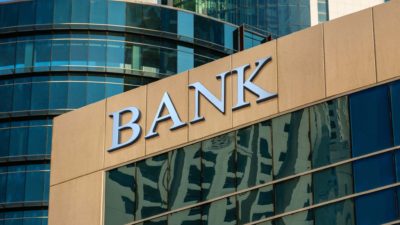The National Australia Bank Ltd (ASX: NAB) share price is up 1% today, outperforming the S&P/ASX 200 Index (ASX: XJO), which is up 0.5%. The ASX bank share just hit a nine-year high!
The local share market is getting a boost following news from the US that inflation is headed in the right direction, as reported by my colleague Bernd Struben.
The US core consumer price index (CPI), which excludes volatile items such as food and energy costs, increased by 0.2% in May 2024. The annual core CPI increase was 3.4%, compared to estimates of 0.3% for the month and 3.5% for the year, according to CNBC.
Following today's rise, the NAB share price is up almost 40% in the last year, as we can see on the chart below. The ASX 200 is up more than 8% in the last 12 months.
Why is this boosting the NAB share price?
As a major ASX bank share, NAB's performance is heavily linked to the economy. Interest rates play an important part in NAB's operations because they affect how much the bank can charge on its loans, how much it pays to savers and how comfortably borrowers can afford their loans.
With US inflation moving in the right direction, this could suggest that interest rate cuts are getting closer in the world's biggest economy. This could encourage other central banks, such as the Reserve Bank of Australia (RBA), to cut rates a little sooner.
Lower interest rates could improve the outlook for NAB's arrears and bad debts. Additionally, if interest rates are somewhat reduced, investors may be willing to pay a higher price/earnings (P/E) ratio for NAB shares.
Recent profit performance
In the FY24 first-half result, NAB reported it generated $3.55 billion of cash earnings, which was down 12.8% year over year. While that represented a sizeable decline, the bank still generated a significant amount of profit.
The NAB net interest margin (NIM) declined from 1.77% in the HY23 result to 1.72%. This shows that NAB's profitability reduced when considering its loan rate compared to the cost of its funding (such as savings accounts).
NAB said the home lending margin competition and term deposit cost headwinds were "moderating", with the HY24 NIM of 1.72% actually higher than the 1.71% achieved in the second half of FY23.
However, lower interest rates may not assist NAB's profitability. The bank is currently generating higher returns on transaction accounts, which don't pay interest while lending against that cash at a relatively high loan rate. A lower RBA rate would likely mean a reduced return on transaction account balances.
NAB share price snapshot
Since the start of 2024, the NAB share price has risen 14%, outperforming the ASX 200, which has only risen by 1.7%.









